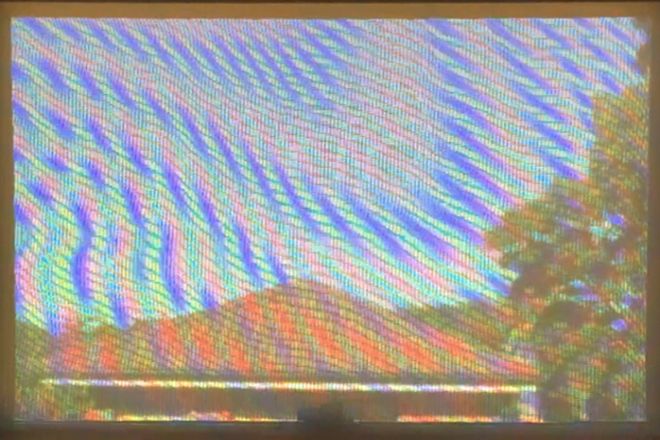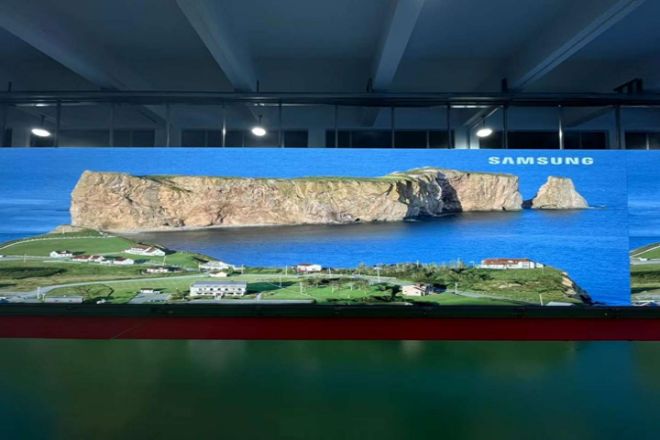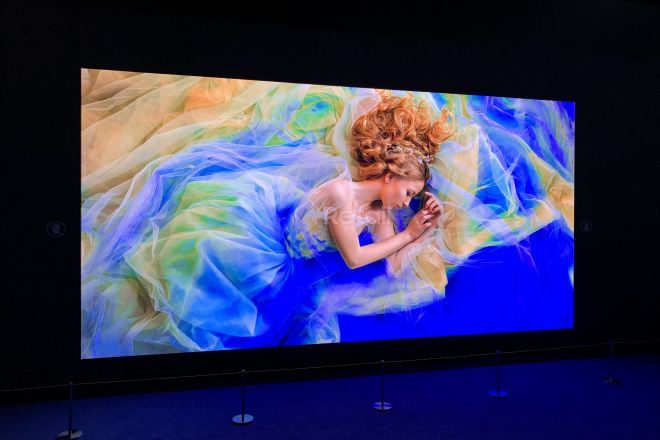序章

デジタル化と情報化の波の中で、 LED表示画面は、現代のディスプレイ技術の優れた代表例として、高輝度、広色域、長寿命などの利点を活かし、屋内外の広告、会議ディスプレイ、舞台公演、スポーツイベントなど、多くの分野で広く使用されています。
しかし、アプリケーションの継続的な拡大とユーザーの表示効果の追求により、LED ディスプレイ画面の解像度の問題が徐々に顕著になり、それと密接に関連するモアレ現象が表示効果に影響を与える重要な要素になりました。
1. LEDディスプレイの画面解像度の概要
LED ディスプレイ画面の解像度とは、ピクセルの密度、つまりディスプレイ画面の水平方向と垂直方向のピクセル数を指し、通常は「水平ピクセル × 垂直ピクセル」で表されます。
たとえば、解像度が 1920×1080 の場合、表示画面の水平方向に 1920 ピクセル、垂直方向に 1080 ピクセルがあることを意味します。
1). ピクセル密度と解像度の関係を説明する
ピクセル密度 (ピクセル密度) とは、単位面積あたりのピクセル数 (平方メートルあたり、インチあたりなど) を指し、通常は PPI (インチあたりのピクセル数) で表されます。ピクセル密度が高いほど、同じ領域内のピクセル数が多くなり、ディスプレイの細部がより鮮明になり、画像がより鮮明になります。
解像度はピクセル密度と密接な関係があります。同じサイズの表示画面では、解像度が高いほどピクセル密度が高くなり、逆もまた同様です。
2). 解像度が表示効果に与える影響
解像度は LED ディスプレイ画面の表示効果に決定的な影響を及ぼします。解像度が高いほど、ディスプレイ画面に表示できる画像の詳細が豊かになり、画質も高くなります。
高解像度の LED ディスプレイ画面は、特に近距離で見ると、より繊細でリアルな画像を表示できるため、ユーザーはより鮮明な画質を感じることができます。
3). 解像度の分類と基準
高解像度、標準解像度、低解像度の定義:
高解像度:
4K(3840×2160ピクセル)以上の解像度など、プロ用ディスプレイ機器や高級テレビなど、極めて高画質が求められる場面でよく使用されます。
1080p (1920×1080 ピクセル) などの標準解像度は現在最も一般的な解像度標準であり、ほとんどのテレビ、コンピューター モニター、マルチメディア デバイスに適しています。
低解像度:
720p (1280×720 ピクセル) 以下など、通常は小さいディスプレイ画面や特定のアプリケーションに使用されます。
4) さまざまなアプリケーションシナリオにおける解像度要件:
屋外の看板や大規模なイベント会場: 視聴者が遠くにいるため、解像度の要件は比較的低くなります。
会議室や展示会などの屋内会場: 観客が近いため、解像度の要件が高くなります。
5). 解像度を向上させる技術的アプローチ
マイクロ LED テクノロジー: より小さな LED チップを使用することで、より多くのピクセルを同じ領域に統合でき、解像度が向上します。
ドットピッチ縮小技術:ピクセル間の間隔を狭めることにより、ディスプレイのサイズを変えずに解像度を向上させることができます。
駆動回路の最適化: 駆動回路の設計とアルゴリズムを最適化すると、ディスプレイのリフレッシュ レートとグレースケール レベルが向上し、表示効果と解像度が向上します。
2.モアレ現象の解析

1)。モアレの定義と原因
モアレ パターンは干渉縞とも呼ばれ、2 つ以上の物体が重なり合うことで形成される規則的な干渉効果です。光が物体の表面を通過すると、光の波長と物体の表面のわずかな変化により、交差する波紋、つまりモアレが生成されます。
2) モアレ発生の物理的原理
モアレの発生は主に、2 つの周期的構造 (LED ディスプレイのピクセル配置とカメラや目の知覚など) 間の干渉によって発生します。2 つの光波が出会うと、重なり合って明暗の干渉縞が形成されます。
3) モアレが画質に与える影響
モアレは通常、ディスプレイ上に繰り返しパターンや波紋として現れ、画像の鮮明度と品質を低下させ、視聴体験に影響を与えます。
4). モアレとLEDディスプレイの関係
- 解像度不足によるモアレ問題
LED ディスプレイの解像度が低い場合、ピクセル間の距離が大きくなり、カメラや目の知覚構造と周期的に重なり合いやすくなり、モアレ現象が発生します。
- ピクセル配列とモアレの関係
LED ディスプレイのピクセル配置もモアレの発生に影響します。ピクセル配置が異なると干渉効果が異なり、画像の表示効果に影響します。
3. LEDディスプレイの解像度とモアレの関係についての考察
1). 解像度がモアレに与える影響の分析
- 高解像度によるモアレ抑制効果
LED ディスプレイの解像度が十分に高い場合、ピクセル間の距離が小さくなり、ピクセルの配置とカメラや目の知覚構造との間の干渉効果が弱まり、モアレの発生が減少します。
高解像度のディスプレイ画面では、より繊細で鮮明な画像を表示でき、ピクセル間の境界が目立たなくなるため、モアレの発生を効果的に抑制できます。
- 解像度が不十分な場合のモアレの発生と悪化
逆に、LED ディスプレイ画面の解像度が低い場合、ピクセル間の距離が大きくなり、カメラや目の知覚構造と周期的に重なり合って、モアレ現象が発生しやすくなります。
さらに、ディスプレイ画面のピクセル配列がカメラや目の知覚構造に近い場合、モアレの問題がより深刻になる可能性があります。
2). 実践事例分析
- モアレを低減する高解像度LEDディスプレイスクリーンの利点
4K以上の解像度を持つLEDディスプレイ画面などのハイエンドディスプレイデバイスでは、ピクセル密度が高く、画像が精巧なため、モアレの発生を大幅に低減できます。このタイプのディスプレイ画面は、写真、映画やテレビ番組の制作、広告表示などの分野で幅広い用途があり、より鮮明でリアルな視覚効果を提供できます。
- 低解像度ディスプレイ画面におけるモアレ問題への対処戦略
解像度の低い LED ディスプレイ画面の場合、モアレの影響を軽減するために、ピクセル配置設計を最適化し、画像処理アルゴリズムを使用してモアレ現象を軽減するなど、いくつかの処理戦略を採用できます。また、カメラや観察者の角度や位置を変更したり、フォーカス設定を調整したりすることで、モアレの問題をある程度軽減できます。
3). 今後の発展動向予測
- 解像度向上技術の継続的な開発
技術の進歩と革新により、LEDディスプレイの解像度は向上し続けます。マイクロLED技術、ドットピッチ縮小技術、駆動回路の最適化などの技術開発により、LEDディスプレイの画質はより高いレベルに引き上げられ、モアレの発生がさらに低減され、表示効果が向上します。
- モアレ除去技術の革新と応用
モアレ問題を解決するために、今後の研究ではモアレ除去技術の革新と応用に重点が置かれます。より高度な画像処理アルゴリズムとハードウェアモアレ防止技術を開発することで、モアレの発生確率を効果的に低減し、表示効果を向上させることができます。
さらに、インテリジェント技術と相互接続技術の発展により、LED ディスプレイはよりインテリジェントになり、環境の変化や使用シナリオに応じて表示効果を自動的に調整できるようになり、モアレなどの干渉要因の発生がさらに減少します。
4. モアレを効果的に除去するにはどうすればいいですか?

モアレを効果的に除去するには、次の方法を使用できます。
カメラの角度を変更します。 カメラと被写体の角度によってモアレが発生するため、カメラの角度をわずかに変更する (カメラを回転させる) と、存在するモアレを除去または変更できます。
カメラの位置を変更します。 左右や上下に動かして角度関係を変えるとモアレを軽減できます。
フォーカスを変更する: フォーカスがシャープすぎる場合や、細かいパターンの詳細度が高い場合は、モアレが発生する可能性があります。フォーカスを少し変更すると、鮮明度が変わり、モアレを解消するのに役立ちます。
レンズの焦点距離を変更します。 異なるレンズや焦点距離設定を使用すると、モアレが変化したり、除去されたりすることがあります。
フロントフィルターを使用する: CCD の真正面に設置し、露出条件が空間周波数に合うようにすることで、画像の高空間周波数部分を徹底的にフィルタリングし、モアレの発生を抑えます。ただし、同時に画像の鮮明度も低下することに注意してください。
ソフトウェア処理: 最終画像に現れるモアレを除去するために、Photoshop プラグインなどの画像処理ソフトウェアが使用されます。
ピクセル配置設計を最適化: LED ディスプレイのピクセル配置設計を改善することで、ピクセル間の周期的な重なりを減らすことができ、モアレの発生を抑えることができます。
カメラピクセルバイアス技術: この方法は、CCD カメラの輝度レベルの解像度を最大化しますが、イメージ センサーにはまだ一定の空間周波数があるため、モアレを完全に除去できない可能性があります。
光学処理: 光学的に処理された LED ディスプレイにより、カメラはさまざまな角度、位置、焦点距離でモアレのない画像を撮影できます。
高品質の素材を選択してください: LED ディスプレイ自体については、高品質の素材を選択すると、画面表面の粗さが軽減され、光の反射や干渉が減り、モアレの発生を抑えることができます。
これらの方法の有効性は、特定の使用環境や機器によって影響を受ける可能性があり、異なるアプリケーション シナリオでは異なる方法の方が効果的である可能性があることに注意してください。実際の操作では、モアレを除去する最良の効果を得るために、複数の方法を組み合わせる必要がある場合があります。
さらに、テレビカメラの場合、特に生放送番組などの特定の場面では、実際の操作の実現可能性と効率も考慮する必要があります。このような場合、モアレの問題に対処するために、より専門的な機器とソフトウェアが必要になることがあります。
結論
まとめると、LED ディスプレイの解像度とモアレには密接な関係があります。この 2 つの概念を深く理解し、効果的な技術的手段を講じてディスプレイ効果を最適化することで、ユーザーの高品質ディスプレイのニーズをよりよく満たすことができます。
最後に、LEDディスプレイについてもっと知りたい方は、 ご連絡ください。
